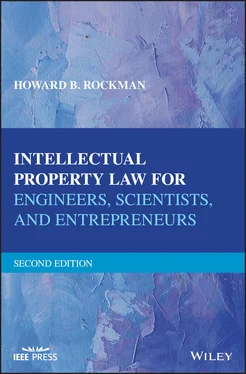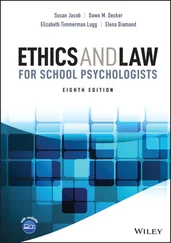There are certain situations in which the Supreme Court has direct jurisdiction to handle cases. These are the ones involving ambassadors, public ministers, counsels, cases in which a state is a party, and a few others. In all other cases, matters reach the Supreme Court by appeal, and the Supreme Court has the ability to accept or not accept an appeal. Cases are appealed to the Supreme Court from either U.S. appellate courts or from the state’s highest courts in the normal course of events. An appeal from an appellate court in the federal system is usually made to the Supreme Court by seeking a “writ of certiorari.” If the writ is accepted by the Supreme Court, the Supreme Court will hear the case and render a decision. Only a very small number of such writs of certiorari are accepted by the Supreme Court, presently in the range of 1–20. In those cases where the Supreme Court does not accept certiorari, it may be understood that the Supreme Court agrees that the appellate court decision being appealed from is correct and should be allowed to stand.
The nine Supreme Court justices have the final say about what our law shall be in many important respects. They are not the legislative branch of the government; however they have a highly significant function to interpret what is meant by the wording of the Constitution or of a particular statute passed by Congress. The court also determines the lawful interpretation to be used in future cases of lower courts. If the Supreme Court gives an interpretation to a particular statute of Congress, and Congress disagrees with that interpretation, Congress can then enact legislation that would overcome the Supreme Court’s interpretation of the language of the statute.
The Courts of Appeals of the federal judicial system normally consist of three‐judge panels, which were first established by Congress in 1891 because of the burden of appeals on the U.S. Supreme Court. The appellate courts do not conduct trials, and disputes between parties are appealed only on the basis of a conflict in the interpretation of the law. The facts decided previously in a lower court are not changed by the Court of Appeals. As a general rule, an appellate court does not have the ability to make an adverse decision regarding a fact established in a lower court.
The Court of Appeals for the Federal Circuit (“CAFC”) is a U.S. Court of Appeals with a primary facility in Washington, D.C. The CAFC was created by Congress in 1982, which merged the then‐existing U.S. Court of Customs and Patent Appeals and the appellate division of the U.S. Court of Claims. Of particular importance, the CAFC is the only appellate‐level U.S. court with the jurisdiction to hear and decide appeals in patent lawsuits originating in any one of the U.S. district courts.
A unique feature of the CAFC is that it is the only appeals court in the federal judicial system whose jurisdiction is based wholly upon subject matter, rather than on geographic location.
The CAFC has exclusive appellant jurisdiction over appeals from:
1 U.S. district court cases relating to patents.
2 The U.S. Patent Trial and Appeal Board.
3 The U.S. Trademark Trial and Appeal Board.
4 Appeals arising from an action against the Commissioner of Patents and Trademarks where the USPTO has refused to issue a patent.
5 The U.S. Court of International Trade, which hears cases involving the importation of foreign goods that have been alleged to infringe one or more U.S. patents, trademarks, or copyrights.
6 Appeals from several government tribunals that do not involve intellectual property.
Decisions by the CAFC in patent cases are binding precedent in other patent cases heard in all of the district dourts throughout the United States. Only the U.S. Supreme Court, or Congress, can reverse or change a decision by the CAFC in a patent case.
In the federal system, the trial courts, those in front of whom witnesses appear and juries decide cases as well as judges, are known as “district courts.” There are approximately 100 or so in the United States, such that no state is without a Federal District Court, and larger states have several. The number of presiding judges in a U.S. district court is determined by statute and is usually based on the number of federal cases arising in the district.
For a case to be tried in a federal court, it must meet at least one of several criteria:
1 The issue must arise from the U.S. Constitution, federal laws, or treaties of the United States.
2 It must arise in admiralty.
3 It must involve two or more states as parties.
4 It must involve the United States as a party.
5 It must be between citizens of different states, with the amount in controversy greater than $75,000.
6 It must be between a U.S. citizen and a foreign country or its citizens.
Most of the controversies handled involve federal statutes or the U.S. Constitution, better known as federal question cases, or diversity cases, which are those between citizens of different states. Patent, copyright, trademark, restraint of trade, federal tax, and infringement of personal rights alleged to violate the Constitution are typical of cases tried in the U.S. district courts.
The 50 state court systems in the United States are far from uniform throughout the country. The systems as well as the names of the courts differ. Also, the law applied in similar‐fact situations may also vary among the states.
Each state has a final court of appeal, normally the supreme court or the court of appeals of that particular state. The highest court practically always confines its work to appeals of cases tried in lower courts. In several states, to ease the workload of the higher court, courts of intermediate appellate jurisdiction are interposed between the higher courts and the lower trial courts.
Below the appellate courts in a state system are the trial courts in a general jurisdiction known either as circuit courts, courts of common pleas, county courts, superior courts, or, as stated previously in New York, the supreme court. Other courts such as probate courts or surrogate courts handle cases involving wills, trusts, and estates. Such courts are usually limited in geographical jurisdiction to a particular county, district, or other major political subdivision of the state.
At the lower end of the chain involving state courts are various municipal courts, police courts, justices of the peace, small claims courts, juvenile courts, and recorders courts who handle cases of very limited jurisdiction.
The jurisdiction of a court is defined as its scope of authority to hear and determine the causes of action presented to the court, given either by a legislature or U.S. or state Constitution. The jurisdiction of a court is dependent upon the geographical region in which the injury or activity occurred, where the individuals reside or do business, to types of cases, and possibly to the amount of money or type of relief concerned. The courts not only have jurisdiction over the people in front of them, they have jurisdiction over those individuals’ property, both real and personal, located within their assigned geographical limits. The courts have the authority under the law to take property of one party in satisfaction of a judgment in favor of another party, where the latter was damaged by the conduct of the one party. However, a court has no authority in a state over property lying outside its territorial limits. For example, a court in Illinois could force a defendant to sell the defendant’s property in Illinois to satisfy a judgment against the prevailing plaintiff; however, the court would have no authority to force the defendant to sell property located in another state.
Читать дальше












